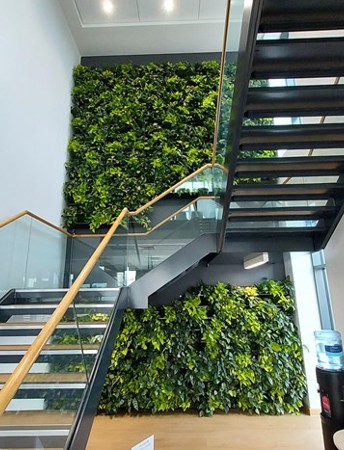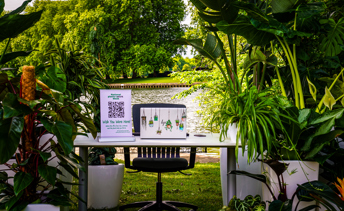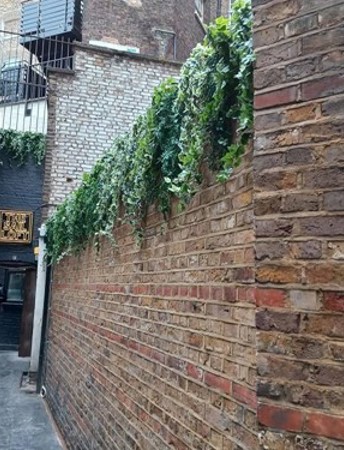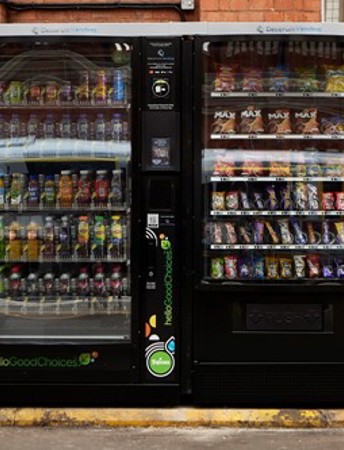Rooftop gardens offer a multitude of benefits for businesses, making them a worthwhile investment in many ways.
But these benefits go past the obvious improvement to first impressions or general kerbside appeal. They actually translate into a positive ROI too. But how? Let's take a look at just a few of the benefits of rooftop gardens for businesses:
1. Happiness
Rooftop gardens are of great importance for mental health and happiness, as evidenced by a University of Exeter Medical School study. The study found that access to green spaces, such as rooftop and other accessible gardens, is linked to improved mental well-being and reduced feelings of stress. In urban environments where green space is limited, such gardens provide a much-needed natural respite, helping to reduce pollution levels and stress, leading to happier and more productive employees.
The benefits of rooftop gardens for overall happiness and well-being are numerous. They offer a tranquil, green escape from the hustle and bustle of the city, providing a space for relaxation and rejuvenation. Such areas also enhance social interaction and community building, which are essential for mental well-being. Furthermore, they can help create a positive brand perception for potential visitors or customers, demonstrating a commitment to environmental sustainability and the well-being of employees.
Their ability to reduce pollution levels and stress can significantly improve employee productivity and satisfaction, ultimately leading to a healthier and happier work environment.
2. Improved air quality
Rooftop gardens can play a crucial role in improving air quality by reducing pollution and filtering harmful gases. Plants on green roofs help filter pollutants such as carbon dioxide and particulate matter, which are major contributors to air pollution. The plants absorb these pollutants through their leaves and then break them down, releasing oxygen back into the air. This process helps to reduce the levels of harmful gases in the atmosphere, ultimately improving air quality.
In addition to filtering pollutants, plants and trees in a rooftop area can also play a significant role in reducing the carbon footprint of buildings. The plants absorb carbon dioxide during photosynthesis, which helps to offset the emissions produced by the building and its occupants. This not only contributes to a healthier environment but also helps to mitigate the impact of climate change.
Furthermore, rooftop gardens can capture and filter rainwater, which helps to improve water quality. By capturing rainwater, they reduce the amount of runoff that carries pollutants into waterways, thus protecting local ecosystems and wildlife.
Overall, these types of areas provide numerous benefits for air and water quality, making them a valuable addition to urban environments.
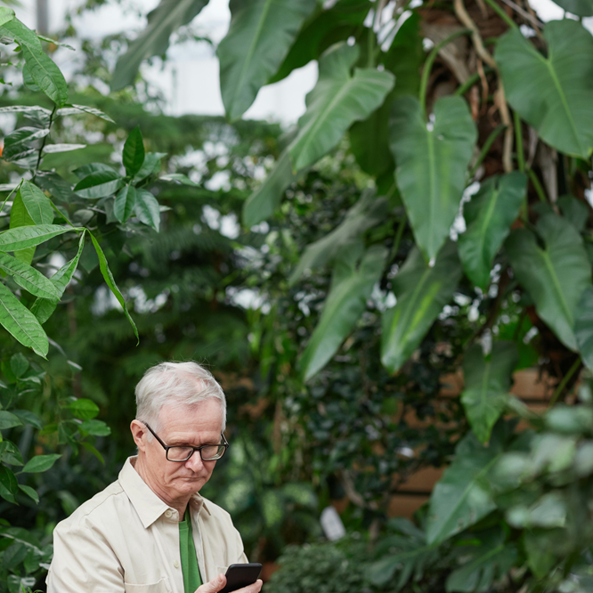
3. Decreased waste
Rooftop gardens play a significant role in reducing waste by extending the lifespan of building materials and reducing the need for heating, ventilation, and air conditioning (HVAC) systems. The presence of such gardens helps protect the building's roof from natural elements such as UV radiation, extreme temperatures, and storm damage, which can degrade building materials over time. Consequently, this extends the lifespan of the building materials, reducing the frequency at which they need to be replaced and ultimately decreasing the amount of waste generated from construction and demolition.
Moreover, rooftop spaces also have a positive impact on waste reduction through their use of waterproofing membranes. By providing an additional layer of protection for the roof, waterproofing membranes prevent water damage and leaks, which can significantly extend the life of the roof and reduce the amount of waste generated from the disposal of damaged building materials.
In addition, these gardens can decrease the need for power usage by providing natural insulation, thus reducing the dependency on HVAC systems. This decreased power usage not only contributes to energy conservation but also reduces the amount of waste generated from the production and disposal of energy-related materials.

4. Effective use of rainwater
To effectively use rainwater in rooftop gardens, it is important to first consider the benefits of rainwater retention, storage, and natural filtration. Rainwater can be collected from rooftops and stored in tanks or cisterns for later use in watering plants. The natural filtration process helps remove pollutants and impurities, making rainwater a clean and sustainable source for plant irrigation.
Rooftop gardens play a crucial role in reducing water runoff and minimising local flooding. By capturing rainwater in such areas, less water is being sent directly into storm drains and sewers, therefore decreasing the risk of overwhelmed drainage systems and localised flooding events.
Key factors to consider when maximising the use of rainwater in green roofs include the design and placement of the garden, the type of soil and plants used, and the efficiency of the irrigation system. Proper planning and maintenance are essential for ensuring that rainwater is effectively utilised and that the rooftop garden continues to thrive.
By incorporating rainwater retention, storage, and natural filtration techniques, outdoor areas can play a significant role in promoting sustainable urban environments.
6. Energy efficiency
Rooftop gardens can significantly improve energy efficiency by providing natural insulation. The soil and vegetation act as a barrier, helping to regulate indoor temperatures by reducing heat gain in the summer and heat loss in the winter. This can greatly reduce the need for excessive heating or cooling, ultimately lowering energy consumption.
The impact on air conditioning and heating systems is substantial. With such areas providing natural insulation, these systems don't need to work as hard to maintain a comfortable indoor temperature. As a result, buildings with gardens on rooftops can experience lower energy demand and reduced fuel bills, leading to potential cost savings for the building.
Studies have shown that buildings with rooftop gardens have experienced a significant reduction in energy demand for heating and cooling. This not only leads to cost savings but also reduces the overall environmental impact of the building. In addition to the energy efficiency benefits, these outdoor zones also provide other environmental advantages such as stormwater management and improved air quality.
7. Urban agriculture
Rooftop gardens have had a significant impact on urban agriculture by utilising underused space to grow fresh produce. One of the key benefits is the ability to collect rainwater for irrigation, reducing the reliance on city water supplies and lowering the overall environmental impact. This practice also helps to mitigate stormwater runoff and reduce the strain on drainage systems.
In North America, cities like Montreal and Toronto have embraced rooftop farming as a way to increase access to fresh produce in urban areas. These initiatives have not only helped to improve food security but also contributed to a sense of community engagement and environmental sustainability.
Growing organic crops on rooftops has several advantages, including a reduction in pesticide consumption and a healthier, more sustainable food source for urban areas. Additionally, plants on rooftops can help reduce energy costs by providing natural insulation and cooling for buildings, ultimately saving money for residents and businesses.
8. Less noise
Rooftop gardens have proven to be effective in reducing noise pollution in urban areas. These gardens work to decrease noise by absorbing, reflecting, and deflecting sound waves, particularly low-frequency sounds that can be the most difficult to control. The vegetation and soil on rooftops serve as a barrier, absorbing sound waves and reducing their intensity. The plants also reflect and deflect sound waves away from the garden, further minimising noise levels.
In busy cities, areas near airports, or underneath flight paths, rooftop gardens can have a beneficial impact in decreasing noise pollution. These areas are often subject to high levels of noise from traffic, aeroplanes, and other urban activities. These gardens provide a natural and aesthetically pleasing way to help combat this issue. By installing rooftop spaces, building owners and city planners can create more pleasant and peaceful environments for residents and workers in these noisy areas.
9. Wildlife
Rooftop gardens in urban environments are surprisingly diverse habitats for wildlife. These green rooftop spaces attract a variety of bird species, including sparrows, finches, and robins, which make use of the lush vegetation for nesting and foraging. Insect pollinators such as bees, butterflies, and hoverflies are also commonly found in such areas, contributing to urban biodiversity and supporting plant reproduction. Additionally, these gardens act as important stopover locations for migrating bird species, providing a much-needed rest area during their long journeys.
The benefits of rooftop gardens for urban wildlife are significant. They create new habitats in otherwise concrete-dominated landscapes, providing crucial food, shelter, and breeding locations for various species. These green spaces offer a respite for migrating birds, allowing them to recharge before continuing their journeys. In London, such gardens have been found to host a variety of bird species, including blackbirds, blue tits, and song thrushes, demonstrating the positive impact these green spaces have on urban wildlife. Overall, they play a vital role in supporting wildlife diversity and enhancing urban ecosystems.
Planning & Building a Commercial Rooftop Garden
Getting Materials in Place
For getting materials in place for a rooftop green space installation, the necessary equipment includes a crane or telescopic forklift for multi-story buildings, as well as basic construction tools such as drills, hammers, and saws. Personnel qualifications require a certified crane operator and construction workers with proper safety training and experience working at heights. Safety harnesses, hard hats, and other personal protective equipment are also essential. As the UK’s #1 provider of commercial gardening and landscaping to businesses, phs Greenleaf has all of the industry leading equipment and trained technicians ready to go.
Specialised materials for rooftop green space construction typically include multiple layers for waterproofing, such as a root barrier, drainage layer, and waterproof membrane. The pedestal system for rooftop pavers is crucial for creating a level and stable surface.
Overall, the successful installation of a rooftop green space depends on the use of proper equipment, qualified personnel, and specialised materials that prioritise safety and sustainability.
Specialised Materials
The specialised materials needed for creating a rooftop green space on a commercial building include waterproofing membranes, drainage mats, root barriers, and high-quality soil. The waterproofing layers are crucial for preventing water damage to the building structure, while the drainage mats and root barriers help to manage water and protect the roof. A pedestal system for rooftop pavers is required to provide a level surface and allow for water drainage.
When selecting plant material for the rooftop environment, it's important to choose species that are drought-tolerant, lightweight, and able to thrive in the limited soil depth of a rooftop. Sedums, grasses, and succulents are popular choices for green roofs due to their ability to withstand harsh environmental conditions.
These specialised materials can be obtained through suppliers specialising in green roof materials, and delivery can be facilitated using a crane or telescopic forklift to transport materials to the rooftop.
Irrigation
Planning and maintaining an irrigation system for a rooftop garden is essential for ensuring that your plants receive adequate water while also taking into account exposure to freezing temperatures and the need for regular draining and winterising. When planning the irrigation system, consider using a drip irrigation system that allows for precise watering and reduces the risk of water pooling and freezing. Additionally, ensure that the system is equipped with a timer to automate watering schedules.
To prevent damage to the building, it is crucial to regularly check the irrigation system for leaks, clogs, and any signs of water damage. Inspect the system before winter sets in to make sure all water lines are drained and properly insulated to prevent freezing and potential bursting of pipes.
Regular maintenance and checks are important for preventing costly water damage to the building and ensuring the efficient functioning of the irrigation system. During the winter months, it is essential to winterize the irrigation system by removing any water from the lines and storing them in a warm, dry place to prevent damage from freezing temperatures.
Commercial Gardening and Landscaping Services
If you’re considering a rooftop garden for your business, we are able to take this off your hands and complete it to the highest standard, allowing you to focus your attention on running your business.
It’s not just rooftop gardens - as the UK’s favourite provider of commercial gardening and landscaping services, we can offer almost any type of large outdoor plant display, smaller solutions such as hanging baskets for pubs and outdoor areas, and even full grounds maintenance.
We are also experienced in indoor planting for office buildings and other commercial settings - from basic office plants all the way to living walls, festive decorations and Christmas trees, and much more.
With over 25 years’ experience of providing planting and landscaping services to businesses throughout the UK we have the knowledge of providing our services in a variety of sectors including hospitality, retail, FM’s and public sector. Which means you can be sure that phs Greenleaf will provide you with an unrivalled plant service.
With around 8,000 customers across the UK, phs Greenleaf ensures each customer is assigned an account manager to coordinate every part of the process from the initial design to the installation.
To learn more or to discuss your own unique requirements, get in touch today!




























